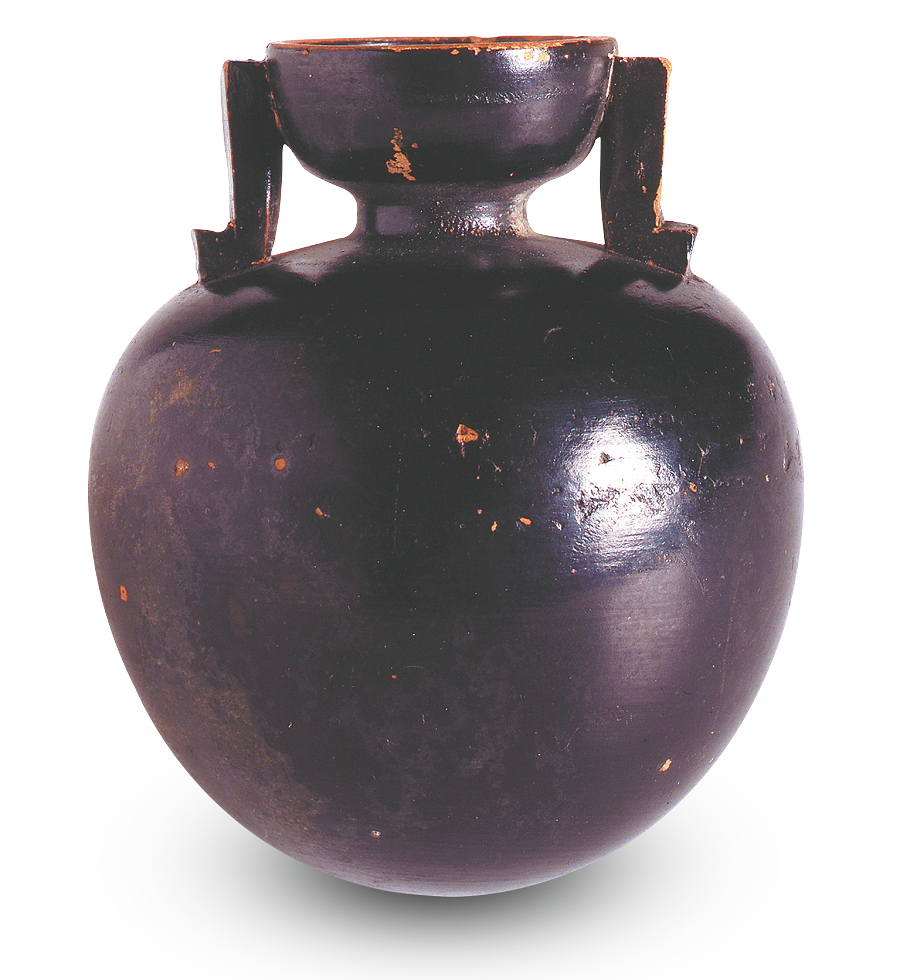

The one in the middle is shown holding up an aryballos — a small round or oval-shaped oil container — from which oil drips into the hands of his companion who stands on his left. The athlete on the right holds a bronze strigil. Made up of a handle and a curved blade designed to conform to the contours of the body, a strigil was used after exercise to scrape off oil, dirt and sweat, the latter two tending to accumulate on the oil-covered young bodies.
Examples of both the aryballos and the strigil, also from the National Archaeological Museum in Athens, are on view at the exhibition that runs until Oct 20.
The applying of oil was done for both aesthetic and practical reasons. While emphasizing well-worked muscles, the oil helps to warm muscles and provides a protective layer to the skin. During wrestling, a well-oiled body would be very slippery and therefore hard for the opponent to grasp, let alone to throw to the ground.
Considered by Plato as a sport for the education of youth in the "Ideal State" he envisioned, wrestling was among the competitions of the ancient Olympic Games, held every four years between the 8th century BC and AD 4th century in Olympia, a small town on the Peloponnese Peninsula in Greece.
The Games also included competitions for jumping, discus and javelin-throwing, horse and chariot racing, and most importantly, racing on foot, which was the only event for the first 13 Olympics.
"Participants were required to complete a length of 192.27 meters in the Games that lasted only for a day," says Guan.
"It was eventually extended to a five-day event starting from its 77th edition in 472 BC."